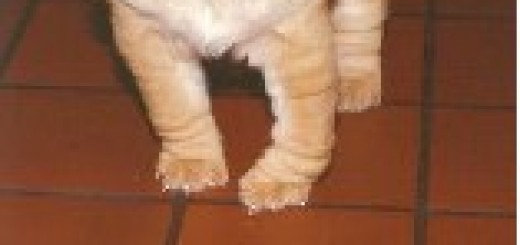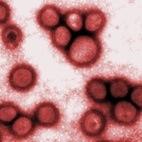Carpal Laxity
Many times Shar-Pei puppies present with a “bowing outward” in the carpus or wrist joint of the front leg or both legs. Usually these pups are in the 6-10 week old range. This usually occurs in rapidly growing, heavy pups and is due to weakness of the ligaments in this area caused by excess weight occurring before adequate bone development. Many of these dogs are on higher protein puppy diets as well as additional vitamin and mineral supplements. Treatment involves: A visit to your veterinarian to rule out other problems affecting the carpii (wrists). Switching diets to adult maintenance food...






